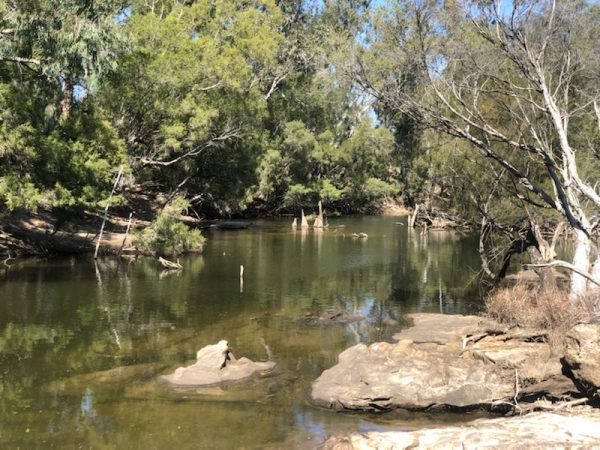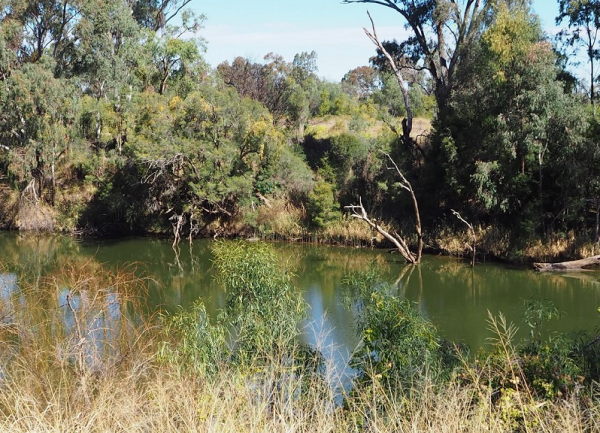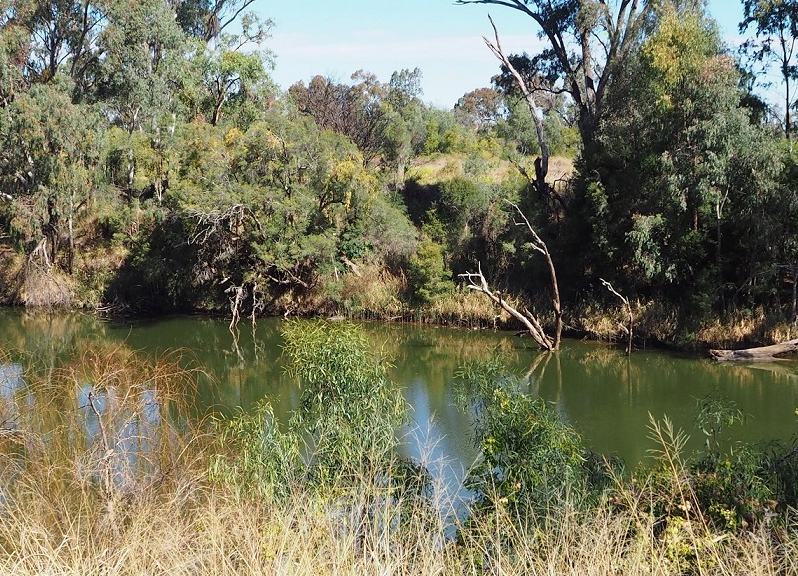


In 2018/2019, Our Nation came together for the purpose of the implementation of the Aboriginal Waterways Assessment program (AWA). The AWA Tool allowed Our Nation to consistently measure and prioritise river and wetland health, so that we are better placed to plan, identify and negotiate Our Country’s water needs.
Rigorous mechanisms (beyond the usual economic and environmental indicators) that help explain the importance of water to particular places were critical for effective involvement of Our People in water planning processes. Over the course of the initial undertaking of the AWA, participants visited extra sites of significance, informing their knowledge of up and downstream impacts, threats and other characteristics of Bigambul Country. The following sties of significance assessed under the AWA program include:
- The Town Common
- Bondi on the McIntyre River
- Inglewood Grinding Grooves on the McIntyre Brook
- Booba Sands on the McIntyre Brook
- Keetah Bridge on the Dumaresq River
- Welltown on the Yarrillwanna Creek
- Old Camp – Toobeah on the Weir River
- Turtle Bend on the Yarrillwanna Creek
The outcomes and findings of the AWA are contained in the Bigambul Nation Report prepared by consultants, Murawin, contracted by the Department of Planning, Industry and Environment, Lands and Water Division (DPIE Water).
The report outlines the process and findings of consultations undertaken with representatives of the Bigambul Nation for the development of a Water Resource Plan (WRP) for accreditation by the Murray-Darling Basin Authority, under requirements of Chapter 10 of the Murray-Darling Basin Plan.
The final report outlines the stakeholder engagement and consultation process and methodology undertaken and makes recommendations for future collaboration with the Bigambul people for caring for Country with particular reference to the rivers and waterways. It presents findings on the objectives and outcomes expressed by Bigambul people for the ongoing management of their water-dependent cultural, environmental, economic and social values and uses. Most recent consultations as part of the AWA also extended on previous Queensland Government consultations to the Bigambul nation conducted in 2017 in relation to the development of the Department of Natural Resources, Mines and Energy ‘Aboriginal People’s Water Needs in the Queensland Murray-Darling Basin’ report (released in 2018); meaning there was an existing foundation of evidence to assist in informing, planning and mobilising the AWA process.
The report unpacks and identifies the value(s) and use(s) of our wetlands and waterways to Bigambul people based on previous and most recent consultation outcomes, including from the perspective of social, cultural, spiritual, environmental and economic life domains. The key values / uses that emerged included:
- The Bigambul people have always valued the waterways as key meeting places, important for ceremonies and family gatherings. These gatherings are used as opportunities to pass on knowledge, teach children and tell stories which connect them to their ancestors.
- The Bigambul people value the position of the creeks and rivers as important for the transmission of culture and ceremonial purposes, such as sharing information and initiations, and song-lines.
- The Bigambul people recognise the importance of respecting and protecting the native fish species and turtles which live in the waterways.
- The Bigambul people utilise parts of the water system for cultural reasons, e.g. using native flora and fauna in making weapons and tools
- The Bigambul people recognise the importance of clean water for swimming, drinking and continuing traditional fishing practices (spearing fish from trees)
- The Bigambul people, historically and contemporarily, value the use of water for cultural sites, e.g. Narran Lakes
- The Bigambul people utilise clean water from the waterways for cultural men’s and women’s Business
- The Bigambul people recognise the interconnectedness of water, and its role in maintain healthy natural systems.
The report also identifies cultural /socio-political; health and wellbeing; economic; and environmental risks / impacts associated with our waterways, and respective mapped responses needed to combat / mitigate these factors. Outcomes of this process exemplified the importance of ensuring targeted, strategic action for the health and preservation of our Nation’s waterways now and into the future. In addition to presenting the scientific / environmental and economic aspects of risk and impact and their associated response strategies, close attention was also paid to mapping key considerations and needed action regarding the centrality of our waterways and wetlands to the preservation and promotion of Bigambul culture and connection; and subsequent impacts on the health and social and emotional wellbeing of Bigambul people.
These steps / processes and their documented findings also helped to inform and identify what constitute the current and future self-directed objectives and outcome targets for the Bigambul nation in relation to our wetlands and waterways (see Table 1.).
Table 1. Summary of BNTAC’s outcome objectives
Our community-led objectives and outcome targets reflect key strategic directions as mapped and identified by the AWA process and final report, including:
- Agreements for access with land owners that allow Bigambul people to walk the country and practice cultural responsibilities
- Participation of Bigambul Nation in water literacy programs to enable effective management of water.
- A simplification of the water and licencing system to enable participation
- Take the lead role in reform of the system on Bigambul land.
- Support from State and Federal Governments in recognising that Bigambul Nation knowledge can lead the way in water reform, including funding a position within Bigambul Nation responsible for water resource management
- Education and career paths for Bigambul people around water management, including:
- Rangers
- Environmental Protection Officers
- Resource Managers
- Involvement in decision making around all water use and flows.
- Being granted cultural access licenses and develop policies on cultural flows
- Enhancing relationships with other users of water, including other Nations. This could include:
- The establishment of forums for discussion with neighbouring Nations
- Respect of all water knowledge, both Aboriginal and non-Aboriginal
- Establishing Regional Councils with membership that represents all water users
